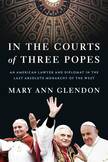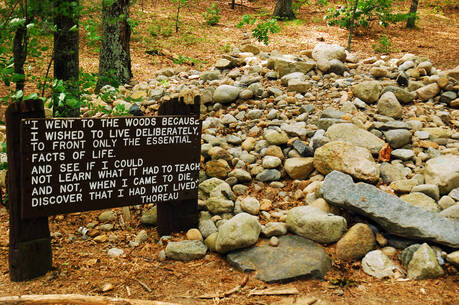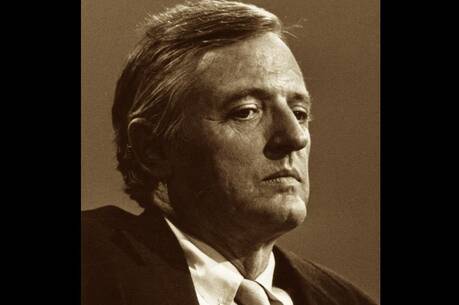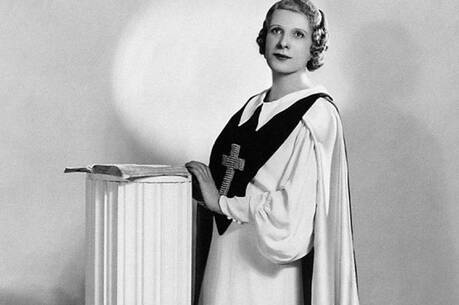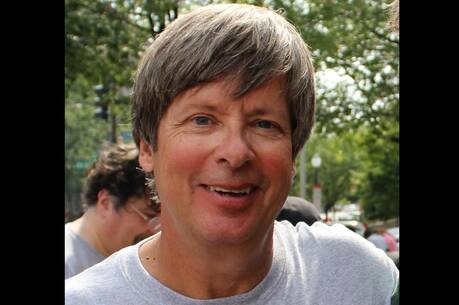‘A court with many lords and few ladies’: Mary Ann Glendon on her experiences of sexism in the Vatican
Mary Ann Glendon’s new memoir, In the Courts of Three Popes, opens with a revelatory scene. The author is watching an American financier be sworn to the Vatican’s highest class of secrecy, the pontifical secret. “As I watched the time-honored ritual,…I could not help but reflect that no one had ever thought to put me under pontifical secrecy,” Glendon writes, surmising that at some point in her many decades of service to various Vatican bodies, “everyone must have assumed that had been done somewhere along the line.”
Laying out what will become a central theme of the book, she adds, “The oversight is revealing of the position of women in a court with many lords and few ladies.”
Glendon pulls few punches when describing her experiences of sexism in the Vatican, though readers will never know what she chose not to include. Her treatment as a “lady” by the “lords” begins on her first assignment, leading a Holy See delegation to a United Nations summit on women. One diplomat in the delegation, Archbishop Renato Martino, makes a point of telling Glendon at their first meeting that his friends think it is “not right that a woman should be the boss of an archbishop.” He later conveniently “forgets” to pass along an invitation to dinner with the pope and the rest of the delegation. Years later, in a public speech, the archbishop claims it had been his idea for her to be the first woman to lead a Holy See delegation.
“The incident was disappointing,” Glendon writes, “not only because I would have liked to have been there, but because I still had a rather romanticized view of the priesthood.” By the time she was writing In the Courts of Three Popes, that view had clearly disappeared, as it does for many who deal regularly with the Vatican.
Most readers familiar with Glendon’s name will associate her with her time as ambassador to the Holy See during the George W. Bush administration—a position that she held for just over a year—but her experience with the Vatican includes stints as a founding member and then president of the Pontifical Academy for Social Sciences, an auditor to the Special Assembly of the Synod of Bishops for America (held in 1997), and a member of the Pontifical Council for the Laity. She also served on the central committee for the Jubilee Year 2000 and on a five-person commission tasked by Pope Francis with assessing the Vatican Bank at the beginning of his papacy.
While the portion of this memoir on her ambassadorship provides an inside look into an alternatingly public and secretive job, it is the part on the Vatican Bank commission that I found most interesting and most frustrating. Glendon describes conducting months of interviews with Vatican Bank employees, laying out a map of power relationships, describing problems in the workplace culture, and making recommendations, only to have the body dissolved after it turned in its final report. When she was named to a new group that succeeded that commission, she realized her and her colleagues’ earlier report had not been read, and she spent the next several years attending meetings where the new commission proposed solutions that her previous commission had already considered and had “found wanting for reputational, legal, or financial reasons.”
The dysfunction and her disappointment are palpable. When she again raises one of the bank commission’s original questions—whether the bank should be closed—readers will be hard-pressed to come up with a reason it shouldn’t.
Glendon’s journey from Vatican outsider to insider learning the ropes provides a captivating frame for her examination of the Vatican’s intertwined grandeur and dysfunction. Readers will appreciate her sharp humor and anecdotes that humanize some of the most famous figures in the Catholic world—like the time she and her daughter were invited to a private dinner with St. John Paul II, only to discover that the pope’s culinary preferences could best be described as spartan. Upon leaving the apostolic palace, Glendon and her daughter look at one another, then walk wordlessly to a restaurant on the Borgo Pio for a second dinner.
Throughout the book, though, it is unclear whose interests Glendon understands herself as serving. She underscores the ways in which the Bush administration’s goals were simpatico with the Holy See’s priorities in the section on her ambassadorship and speaks about the public diplomacy initiatives she undertook “to promote the interests and values of the United States.” But the only time there seems to be any tension between her religious and civic responsibilities is at the end of her tenure as ambassador, when Barack Obama had already been elected president. She is asked to speak at a Christmas event at the U.S. embassy in Rome and laments that out of the three ambassadors present, she was the only person to speak about the religious significance of the holiday.
Later, writing about a committee she was asked in 2010 to assemble “to oversee litigation against the Holy See in the U.S. courts,” Glendon writes glowingly about the lawyer Jeffrey Lena and his team, who had “prevailed in every single case, some involving millions of dollars, that had been brought against the Holy See and the Vatican Bank in the U.S. courts,” characterizing their victories as “brilliant.” Some of those cases dealt with sexual abuse. Glendon and Lena saw themselves as protecting the Holy See’s sovereign immunity, but if she had any misgivings about taking the Holy See’s side in abuse cases, Glendon has left them out of this book.
In her various roles as an ambassador, a lawyer, a mother and a Catholic, Glendon certainly would have had to navigate some difficult personal questions about how these identities intersect in a Vatican setting. However, she maintains a cool distance from personal revelations throughout much of the book. One surprising example: She mentions her husband’s death in the middle of a paragraph that starts with recollections of her teaching at Harvard University and on the bank commission; two paragraphs later, she is back to business.
It is a disappointing lacuna, especially taking into account how much about her early life Glendon reveals in the introduction. Over the course of the book, she evolves from a passionate civil rights advocate raised Catholic in a social-justice-focused congregationalist community to a professor and diplomat with a reputation for political conservatism, even refusing the University of Notre Dame’s Laetare Medal in 2009 when the university decided to give an honorary degree to Barack Obama at the same event.
Glendon writes briefly about her transition from political liberal to “independent,” based on her concerns about abortion and a feminism that she perceived “harbored animosity to men, marriage, and motherhood.” A look into how her understanding of herself and her church evolved over the many years following that transition and covering several papacies would, I think, have taken this memoir from being a good book to a great one.


